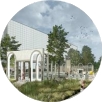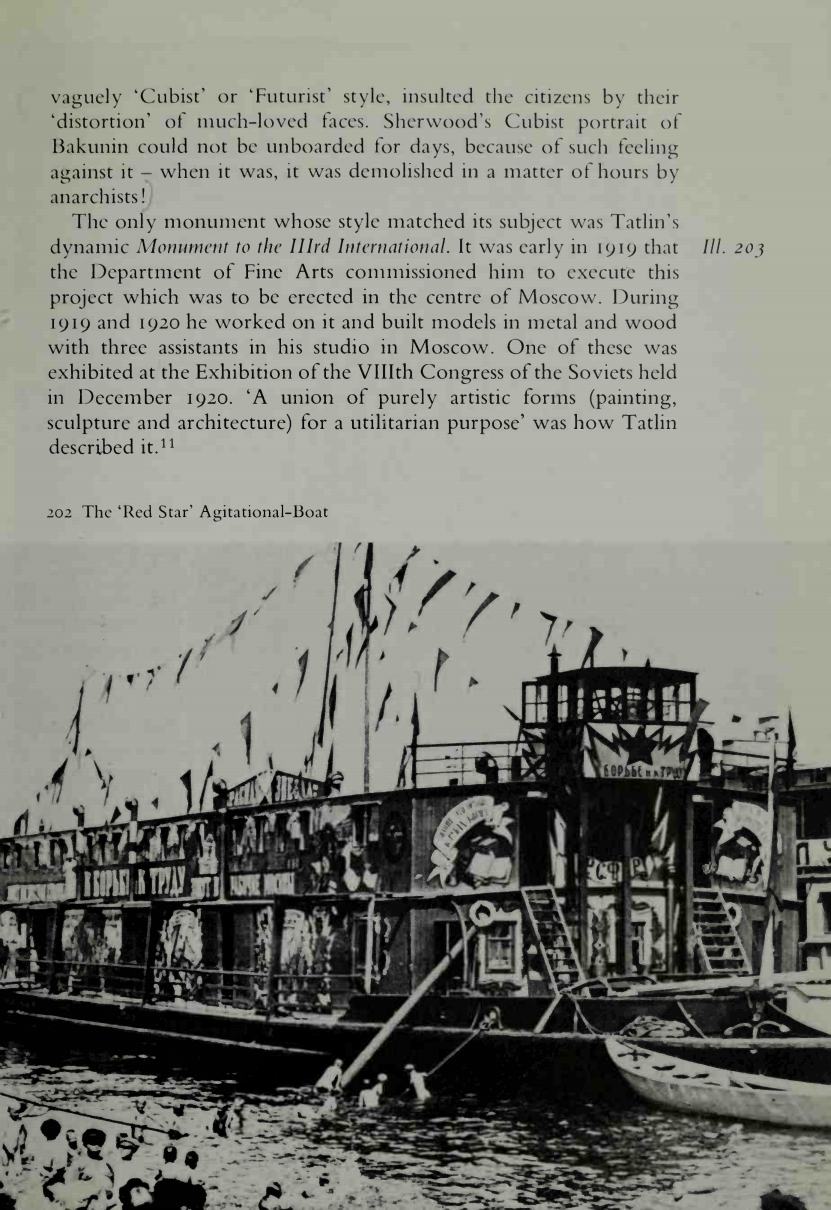|
|
Gray Camilla. The Russian Experiment in Art: 1863—1922. — New York, 1970The Russian Experiment in Art: 1863—1922 / by Camilla Gray. — New York : Harry N. Abrams, Inc., 1970. — 296 p., ill.
This is the first book to examine the Russian contribution to what we now call the modern movement in art and architecture. It reveals an activity and achievement which have hitherto been almost unknown and unrecognized, but which are now shown to be of the greatest importance. The author has tracked down periodicals, exhibition catalogues, and other documents which are now very rare, and out of them has reconstructed the record of her period. She has supported this with illustrations drawn from all the important Western collections of Russian art and also from the far more important collections in Russian museums, which have never been seen in the West. Artists like Malevich, Tatlin, Rodchenko, who have hitherto been only names to most of us, are now given their full stature as artists and personalities. They are also seen as powerful formative influences on the continental movements between the wars, particularly the Bauhaus. The story is exciting as well as important. From the purely aesthetic point of view it tells of historic experiments and discoveries. But its greatest interest, perhaps, is in its account of an attempt to integrate art with life and society—an attempt that was pursued with passionate idealism through the revolutionary years which gave the movement’s protagonists such a unique opportunity. In its short-lived heyday, music, drama, poetry, and all the industrial arts were embraced in an experiment which attacked at the root the problems which still concern the artist today.
Introduction
‘Reality is superior to its imitation in art’ — wrote Chernishevsky, the aesthetic propagandist of the 1860s in Russia. ‘Let us tear ourselves away from our speculative activity [easel painting] and find a way to real work!’ — was the cry of the Constructivists in the 1920s. The sixty years which divide these two quotations provide the scope of the present study.
Throughout this time and as a constant theme, now blazoned forth, now disguised, runs the idea of a renewal of art as a socially active force — ‘which must not reflect, imagine or interpret, but really build’ [the Constructivists] — ‘to prevent the accusation that art is an empty diversion to be despised’ [Chernishevsky, the spokesman of the ‘Wanderers’]. In this book I have tried to trace the thread of this debate and the way in which it was worked out in art in Russia.
The debate was brought to a head in the work of Malevich and Tatlin, of the Suprematists and Constructivists, when the idea of art as a spiritual activity was juxtaposed to that of propaganda-art; the artist-priest to the artist-engineer; art for today and the masses, and art for tomorrow and the élite.
I should like to explain that it was these works and ideas of Suprematism and Constructivism which first excited me and drew me to this study. These works are thus the focus of this book and my treatment of nineteenth- and early-twentieth-century developments has been governed by an attempt to trace back to the roots the ideas which culminated in the pioneer work of Malevich and Tatlin.
My task has met with many difficulties, for the documentation on this subject is rare and hard to find. There has been almost no general account of the period of 1910-20 in Russian art and I have had to turn to newspaper articles, unpublished memoirs, recollections of those artists still living — often so contradictory — exhibition catalogues, random references in published memoirs and occasional references in literary histories of the period which are far more numerous than those dealing with painting. The piecing together of this incoherent information dealing with a period of such historic importance but immense complexity has been difficult.
I have many people to thank for their help and encouragement over the four years during which I have been working on this book. I would first like to thank Mr Jay Leyda who first made the ideas and personalities of my story come alive to me and Mr Alfred Barr who has allowed me to use unpublished material from his personal archives of Alexander Rodchenko; they have both given me invaluable help and encouragement in the course of my researches. Others whom I must thank for their practical help and advice are Professor Meyer Schapiro, Mr Herbert Spencer, Professor George Heard Hamilton, Mr M. Abramsky, the late Sir Herbert Read, the late Mr Eric Gregory, Professor David Talbot Rice, Mr W. Sandberg, Mr J. B. Neumann, Mrs Valerie Jensen, Lady Norton and Sir Isaiah Berlin.
There are others to whom I owe much: Miss Violet Connolly for first introducing me to Russia; Miss Dora Cowell and Mrs Anne Fremantle who have made this book a possibility through their generous support; and very specially to my sister Cecilia Gray for her generous and patient co-operation in providing me with so much of the photographic material.
I must also thank the following for providing me with photographs: Mr Eugene Rubin, Mr Andrzej Dyja, Miss Zoe Dominic and Mrs Leslie Bonham-Carter. I must also acknowledge my thanks for photographs to The Museum of Modern Art, New York; Yale Art Gallery, New Haven, Connecticut; The Hermitage, The Theatrical Museum and The Russian Museum, Leningrad; and the Tretyakov Gallery, Moscow.
I must also record my gratitude to the Directors and staff of the above-mentioned institutions for the facilities with which they provided me in the course of my studies: likewise those of the Slavonic Division of the New York Public Library; the Widener Library, Cambridge, Massachusetts; the library of The Museum of Modern Art, New York; the British Museum, London; St Antony’s College, Oxford; the School of Slavonic Studies, London University and most particularly the Victoria and Albert Museum library in London where I have received every attention and a lively co-operation during the four years of my researches there. I must also acknowledge my thanks to the House of Friendship organizations in Moscow and Leningrad which provided me with invaluable assistance in forwarding my researches in Russia.
Without the patient and generous co-operation of those surviving artists who took an active part in the story I have tried to relate, little would have been possible. I must therefore thank most particularly, for their help and permission to reproduce documentation from their personal archives, Mikhail Larionov and Natalia Goncharova; David Burliuk and Yury Annenkov; Naum Gabo and Anton Pevsner, Paul Mansurov, Vladimir Izdebsky, Zhenia Bogoslavskaya-Puni, Bertold Lubetkin, Mart Stam, Hans Arp, Ivan Tschichold, Nelly van Doesburg, Sonia Delaunay, Alexander Benois, Sergei Makovsky, Dr Zarnower, Mr and Mrs Rostislav Dobuzhinsky, as well as many others unnamed here.
Last but not least I must thank the many friends whose interest and encouragement has sustained my courage, among whom very specially Katia Zoubtchenko and my brother Edmund.
Camilla Gray
Contents
Introduction.. 6
CHAPTER ONE. 1860’s-90’s.. 9
CHAPTER TWO. 1890-1905.. 37
CHAPTER THREE. 1905-10.. 65
CHAPTER FOUR. 1909-11.. 93
CHAPTER FIVE. 1912-14.. 131
CHAPTER SIX. 1914-17.. 185
CHAPTER SEVEN. 1917-21.. 219
CHAPTER EIGHT. 1921-22.. 244
Text References.. 277
Selected Bibliography.. 280
List of Illustrations.. 283
Index.. 292
Sample pages
Download link (1970) (pdf, yandexdisk; 45,2 MB).
Download link (revised edition, 1986) (pdf, yandexdisk; 34,9 MB).
Все авторские права на данный материал сохраняются за правообладателем. Электронная версия публикуется исключительно для использования в информационных, научных, учебных или культурных целях. Любое коммерческое использование запрещено. В случае возникновения вопросов в сфере авторских прав пишите по адресу [email protected].
2 марта 2019, 19:11
0 комментариев
|
|





Комментарии
Добавить комментарий